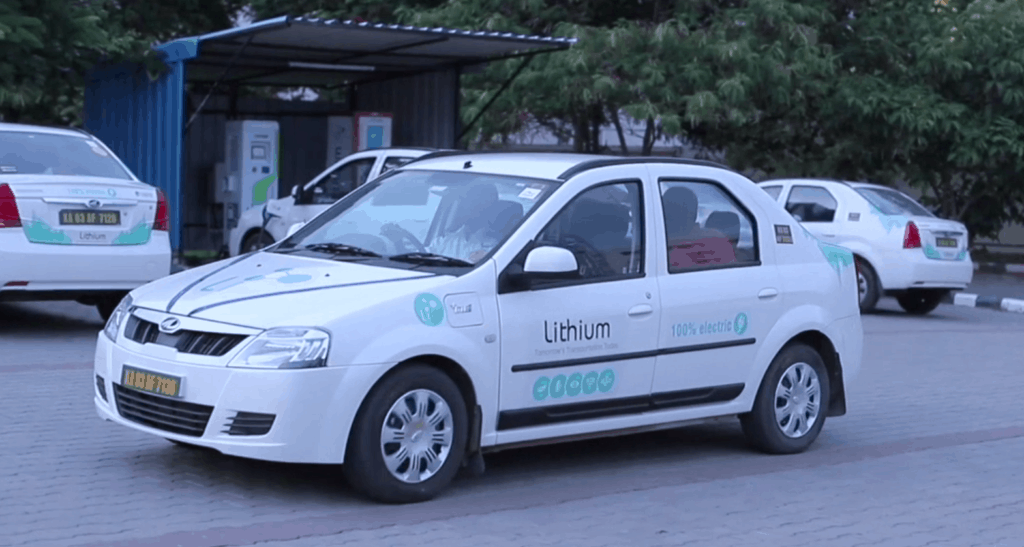Bengaluru is today synonymous with traffic and air pollution. Among Indian cities, Bengaluru ranked third in overall emissions and energy consumption in a recent survey by CSE (Centre for Science and Environment). PM2.5 and PM10 emissions contribute to much of the air pollution in the city, and 60-70% of these emissions originate from vehicles and road dust.
Considering the high contribution of vehicle emissions to air pollution, the Karnataka Electric Vehicle and Energy Storage Policy is a welcome move. The policy targets 100% electric mobility by 2030 for certain vehicle segments — auto rickshaws, cabs, corporate fleets, school buses, public transport buses, and three- and four-wheeler goods vehicles.
Buses, cars should be electrified first
Buses and four-wheelers (private cars, cabs) are the major contributors of CO2 emissions in Bengaluru, followed by two-wheelers, considering the average daily run of different categories of vehicles. Around 6,000 intra-city buses each cover 150-200 km per day, 1.75 lakh taxis cover 200 km, and 14.85 lakh private cars cover around 10 km each daily. (Though the number of private cars in the city is almost eight times that of the taxis, the average daily run of taxis is 20 times that of private cars.)
Hence, electrification of buses, followed by cars/taxis and then two-wheelers, should be the State’s preferred route of action.
But are electric buses financially viable for BMTC?
State Transport Utilities (STUs) across India have been exploring financial models including purchase and lease, for electric vehicles. The outright-purchase model implies a huge initial cost on the STUs, but as the ownership remains with a single entity, operations are comparatively easy. Whereas the leasing model has a complex structure in terms of the sharing of responsibilities between STUs and leasing agencies.
BMTC (Bangalore Metropolitan Transport Corporation) has already made clear its intention to include electric buses in its fleet. Though the initial procurement costs would be high, deploying e-buses on profit-making routes (Vajra and Vayu Vajra) could help BMTC cope with this. Besides, the operation and maintenance cost would be low compared to the diesel bus variants. Faster Adoption and Manufacturing of Electric Vehicles scheme (FAME)-II, which subsidises the purchase of e-vehicles for public transport, is also likely to help.
Can e-vehicles catch on in car, two-wheeler segment?
Electric cars in India typically have a range of 100-150 km per charge, depending on battery capacity and vehicle class (For example, Mahindra e2o Plus – 110 km/charge, Mahindra Verito – 180km/charge, Tata Tigor – 140km/charge). But, as mentioned earlier, the average daily run of cabs in Bengaluru is 200 km. That is, a gap exists between the available and required range of e-cars.
This can be addressed by setting up fast-charging stations at select locations based on a Public-Private Partnership (PPP) model. The PPP model would ensure financial and operational viability. To begin with, such charging infrastructure can be set up in zones that have high pollution and traffic, such as CBD and IT parks.
Certain cab aggregators, such as Lithium Urban Technologies, have already started running EV cab fleets. An incentive policy can further encourage EVs in this segment. Cab aggregators could also be mandated to deploy a certain percentage of electric vehicles in their fleet.
For the two-wheeler segment, range doesn’t seem to be a problem. According to the Comprehensive Mobility Plan drawn up by the Directorate of Urban Land Transport, the average daily run of a two-wheeler in Bengaluru is only 8 km, whereas e-bikes in India run approximately 70 km/charge.
However, the two-wheeler e-segment is not catching on because currently very few apartments can provide charging points for these vehicles in parking lots. This has to be thought about while designing new buildings.
What we can learn from global EV leaders
Some global leaders in electric vehicles – such as Norway, USA, and China – have policies targeting demand-supply incentives (subsidies for both purchase and manufacturing), technological research, charging infrastructure, and outreach. For instance, Norway provides free public charging-points, and a 10,000 NOK subsidy for private charging-stations.
Meanwhile, the US has mandated EV-readiness for certain kind of buildings, and has streamlined the permit process for EV charger installation. All commercial establishments have EV park-and-charge lots. Of the total charging stations in the US, 16% are fast-charging stations, and the rest are normal ones.
Further, the US and China regularly hold customer awareness programmes to increase public engagement and interest.
What Bengaluru can do
In Bengaluru, the lack of charging infrastructure remains a major roadblock. As the purchase of electric vehicles is already subsidised, policies should now target city-wide charging infrastructure.
Battery swapping can also be a game changer for the EV ecosystem – battery standardisation, with ‘One battery fits all’ principle, plays a key role. One should be able to exchange EV batteries at any station, irrespective of manufacturers.
Incentives such as free parking, discounted charging at public places, dedicated parking for e-cabs, and mandating EV charging facility in building bye-laws (residential and commercial) will go a long way in encouraging citizens to opt for electric vehicles, thus ensuring eco-friendly transport.
Also read:
► Mitigating the curse of the car in Indian cities
► Two-stroke autos: banned but not out; going electric could be a solution to pollution
► Air pollution dropped 28% in Bengaluru during lockdown

Something that makes electric vehicles unviable in the taxi segment, is that the govt imposes fare regulations in bangalore, which is not the case in other metros.
Fare regulations make it unviable for drivers to earn decent money
That is true, but I feel fare regulations are required to control the market at times. however we need to have different set of regulations for ICE and EV cabs.